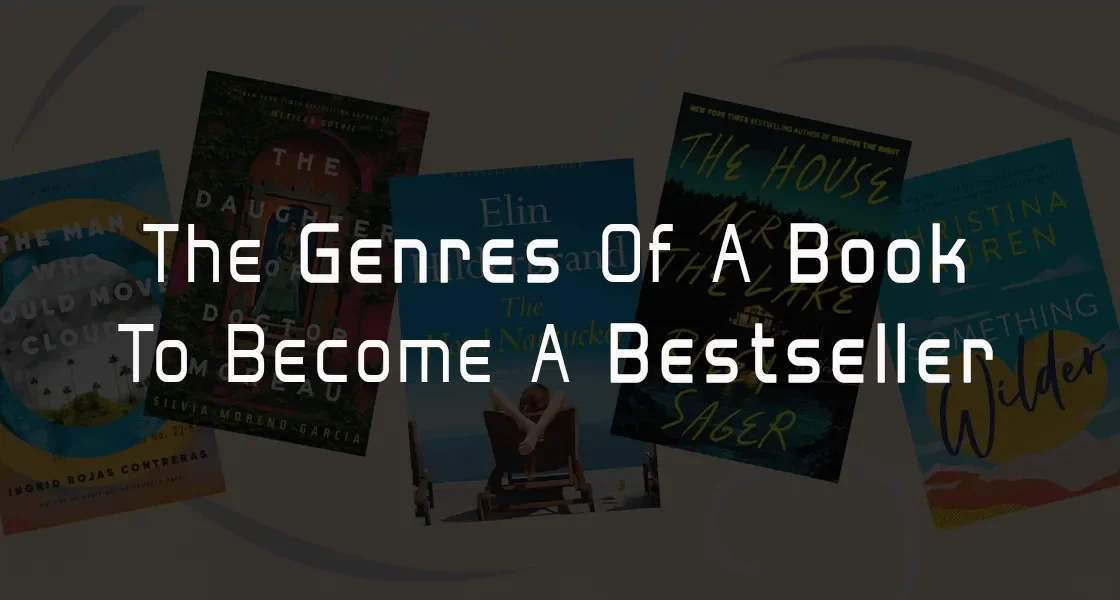
Table of Contents
ToggleDiscover 101 Empowering Book Genres to Ignite Your Mind
For centuries, books have been our trusted companions, providing a treasure trove of knowledge, endless entertainment, and boundless inspiration. They draw us into thrilling mysteries, warm our hearts with tender romances, and transport us to otherworldly realms through breathtaking science fiction.
From deep philosophical musings to thrilling thrillers, the world of books is a kaleidoscope of genres, each offering a unique experience. Whether you’re looking for intellectual stimulation, a dose of adrenaline, or a heartwarming story to relax with, there’s a book for everyone. The fact that these diverse genres have the ability to captivate, educate, and touch the human soul is a testament to the power of literature.
In this enlightening journey, we will embark on a comprehensive exploration of 101 distinct book genres, unveiling the rich tapestry of literary diversity that has enchanted readers throughout history. So, get ready to embark on a literary adventure like no other. Each genre has its own story to tell, and together, they paint a vibrant mosaic of human imagination and creativity. So stay tuned as we delve into the world of books and explore the myriad genres that have shaped the literary landscape.
A Step-by-Step Guide to Identify Genre of a Book

This comprehensive guide provides a concise and compelling roadmap for navigating the complex world of the book genre. Through clear, practical steps, readers will learn how to quickly identify literary categories and discover the essence of each genre.
From distinguishing fiction from non-fiction to exploring subgenres and crossovers, Whether you’re an avid reader or an aspiring writer, this informative blog will empower you to navigate the diverse landscape of literature with confidence and precision. Plus, with the aid of our “top 35 unforgettable writing prompts,” you’ll have an extra tool to enhance your literary journey.
Unlock the power of genre identification and embark on a rich reading journey tailored to your preferences. Whether you’re looking for a thrilling mystery or a captivating fantasy, this guide, along with the inclusion of “top 35 unforgettable writing prompts,” will help you find the perfect fit for your literary pursuits.
Understanding Popular Book Genres
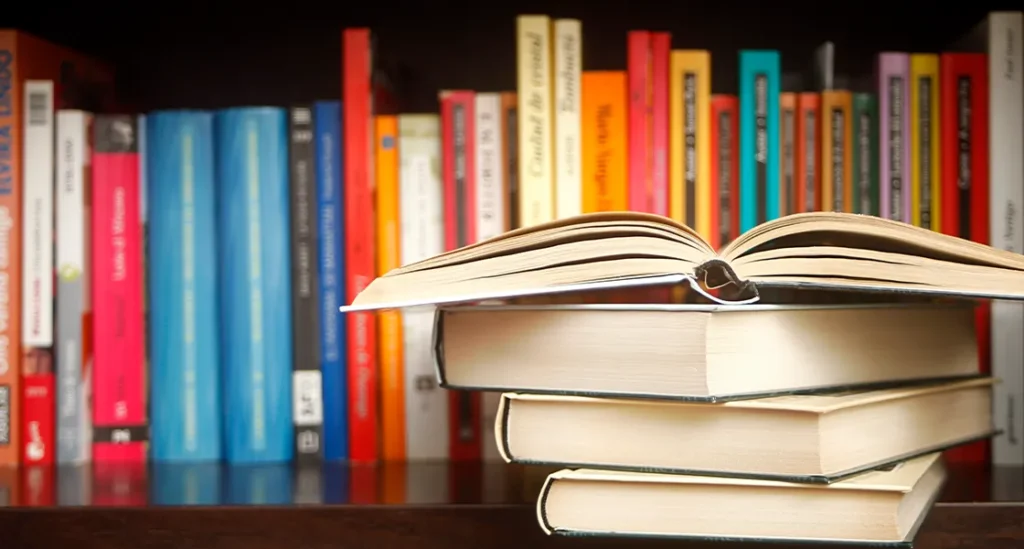
Books possess the remarkable ability to whisk readers away to uncharted realms, evoke profound emotions, and ignite the fires of creativity within. A rich literary landscape is cultivated by an array of popular genres, each tailored to distinct tastes and inclinations. Examining these genres in-depth unveils their unique attributes and enduring allure, enriching our appreciation of the diverse tapestry of literature.
Fiction Genres
1 Literary Fiction:
Literary fiction writing is a genre that emphasizes artistic and intellectual value in its prose. It explores the depth of human emotions, often through nuanced character development, intricate language, and philosophical themes. These novels prioritize character-driven narratives over plot-centric ones, focusing on the intricate complexities of life.
For example, F. Scott Fitzgerald’s “The Great Gatsby” delves into the intricate relationships, dreams, and aspirations of characters in the Roaring Twenties. The rich prose, laden with symbolism and introspective storytelling, makes it a quintessential work of literary fiction, as it masterfully examines the human condition, societal values, and the American Dream. It’s a genre that invites readers to ponder the profound and often challenging aspects of the human experience.
2 Historical Fiction:
Historical fiction is a genre that immerses readers in past eras by blending actual historical events with fictional characters and narratives. This unique combination allows readers to vividly experience different time periods and gain insights into the people and events of the past. For instance, Anthony Doerr’s “All the Light We Cannot See” transports readers to World War II, offering a deeply researched and emotionally charged portrayal of life during the war.
The book not only captures the historical accuracy of the period but also weaves in the personal stories of a blind French girl and a German boy, making the historical context come alive through the intimate experiences of its characters.
3 Mystery/Thriller:
Mystery and thriller novels are thrilling and suspenseful, designed to keep readers on the edge of their seats. These stories often revolve around enigmatic puzzles, crime investigations, and unexpected plot twists.
A prime example is Gillian Flynn’s “Gone Girl.” The novel begins with the sudden disappearance of Amy Dunne, and as the plot unfolds, it takes readers on a rollercoaster ride of psychological intrigue and suspense.
The narrative keeps readers guessing and questioning the motives of the characters, making it an engaging and immersive experience. Mystery and thriller genres offer an adrenaline rush and a constant desire to uncover the truth, making them a favorite among those who relish the thrill of the unknown.
4 Romance:
Romance novels are dedicated to the exploration of love and relationships. These books encompass a wide range of emotions, from the intense passions of love and desire to the heart-wrenching experiences of heartbreak and ultimate triumph. Jane Austen’s “Pride and Prejudice” stands as an iconic work in this genre. The novel revolves around the evolving relationship between Elizabeth Bennet and Mr. Darcy, using their interactions to address societal norms, misunderstandings, and the profound, enduring nature of true love. Romance novels provide readers with an opportunity to experience the depth and complexities of human relationships, offering a sense of escapism and the possibility of happily ever after.
5 Science Fiction:
Science fiction explores the boundless realms of futuristic worlds, advanced technologies, and speculative ideas. These narratives encourage readers to ponder the potentials and pitfalls of the future. Isaac Asimov’s “Foundation” series is a notable example of this genre. Set in a vast galactic empire, the series contemplates the decline and fall of this empire and introduces the concept of psychohistory, a fusion of science and imagination, which predicts the future based on the behavior of large groups of people.
Science fiction allows readers to delve into imaginative scenarios, where scientific advancements intersect with human aspirations and dilemmas, making it a genre that sparks both curiosity and contemplation.
6 Fantasy:
Fantasy novels transport readers to magical realms filled with mythical creatures, enchanting lands, and epic quests. J.R.R. Tolkien’s “The Lord of the Rings” is a quintessential example, where hobbits, elves, dwarves, and wizards unite to vanquish the dark lord Sauron and destroy the One Ring. This epic journey immerses readers in a richly detailed and imaginative world, replete with unique languages, cultures, and creatures.
Fantasy allows for a complete escape from reality, igniting the reader’s imagination and offering a sense of wonder and adventure. Whether exploring ancient legends or creating entirely new worlds, fantasy offers a realm of endless possibilities and extraordinary adventures.
7 Adventure:
Adventure novels are a thrilling genre that takes readers on daring quests and expeditions, offering a rollercoaster ride of excitement. Arthur Conan Doyle’s “The Adventures of Sherlock Holmes” is an enduring example, where the brilliant detective Sherlock Holmes and his faithful companion Dr. Watson embark on a series of mysteries and escapades.
The genre is known for its relentless pacing, suspenseful encounters, and constant push towards the unknown. Adventure novels often involve physical and intellectual challenges, making them a favorite among readers seeking excitement and adrenaline. They invite readers to join the characters in their journeys, experiencing the thrill of discovery and the satisfaction of overcoming obstacles.
8 Dystopian:
Dystopian fiction is a genre that envisions dark and often oppressive futures. These narratives are frequently set in post-apocalyptic or totalitarian societies and serve as cautionary tales, reflecting on the darker aspects of human nature and warning of potential future scenarios. George Orwell’s “1984” is an iconic example, presenting a dystopian society under the totalitarian rule of Big Brother, where independent thought is suppressed, and surveillance is pervasive.
Dystopian fiction encourages readers to contemplate the fragility of freedom and the consequences of power and control, often prompting introspection about contemporary society and the importance of preserving individuality and critical thinking.
9 Young Adult (YA):
Young Adult books are tailored to a teenage audience, covering a wide range of genres while addressing themes relevant to young readers. Suzanne Collins’ “The Hunger Games” is a prime example of this genre, merging dystopian elements with coming-of-age themes. It follows the determined and strong-willed Katniss Everdeen as she navigates a brutal competition and confronts the inequalities of her society.
YA books resonate with young readers by addressing the challenges and experiences unique to their age group, from self-discovery and identity to the complexities of relationships and societal issues. They provide relatable protagonists and compelling stories that speak directly to the concerns and interests of teenagers.
10 Children's Fiction:
Children’s fiction caters to young minds at various age levels, offering engaging stories from picture books for toddlers to middle-grade novels for pre-teens. Maurice Sendak’s “Where the Wild Things Are” is a beloved classic in this genre, taking young readers on a fantastical journey with Max, a mischievous boy who sails to the land of wild creatures.
This imaginative tale encourages children to explore their own creativity and emotions, fostering a love for reading and storytelling from an early age. Children’s fiction plays a crucial role in nurturing a child’s imagination, teaching valuable life lessons, and introducing them to the joy of literature. It provides a gateway to a world of wonder and discovery for young readers.
Non-Fiction Genres
1 Biography/Autobiography:
Biography and autobiography books provide in-depth accounts of the lives of noteworthy individuals. They offer readers valuable insights into the remarkable accomplishments and enduring struggles of these notable personalities. For instance, “Steve Jobs” by Walter Isaacson offers a comprehensive exploration of the co-founder of Apple Inc, revealing the intricacies of his life and contributions to the tech industry.
2 Memoir:
Memoirs, unlike biographies, are deeply personal narratives. They focus on an author’s own life experiences, providing an intimate glimpse into their thoughts and emotions. A prime example is “Eat, Pray, Love” by Elizabeth Gilbert, which offers readers a profound and personal journey of self-discovery, narrating the author’s quest for meaning and happiness.
3 Self-Help:
Self-help books are dedicated to empowering readers with practical strategies and guidance for improving various aspects of their lives, encompassing health, relationships, and career. “The 7 Habits of Highly Effective People” by Stephen R. Covey is a quintessential example, offering readers a comprehensive framework for personal and professional development.
4 Psychology:
Psychology books delve into the intricate workings of the human mind and behavior, unraveling the complexities of the human psyche. For a comprehensive exploration, consider “Thinking, Fast and Slow” by Daniel Kahneman, which delves into the cognitive processes that shape our decision-making.
5 Philosophy:
Philosophy books tackle profound questions about existence, ethics, metaphysics, and knowledge. “Meditations” by Marcus Aurelius is a classic example that invites readers to ponder life’s fundamental inquiries and explore Stoic philosophy.
6 History:
History books serve as time machines, chronicling past events, people, and civilizations. They provide valuable context and understanding of our world’s evolution. “A People’s History of the United States” by Howard Zinn, for instance, offers an alternative perspective on American history, emphasizing the experiences of marginalized groups.
7 Travel:
Travel books transport readers to distant lands, immersing them in new cultures and landscapes. They offer cultural insights and inspire wanderlust. “The Alchemist” by Paulo Coelho combines adventure and self-discovery, making it a travel-inspired novel that stirs the soul.
8 Cookbooks:
For culinary enthusiasts, cookbooks are culinary bibles, offering a delectable array of recipes and expert cooking techniques for various cuisines. “Joy of Cooking” by Irma S. Rombauer is a timeless example, cherished by home chefs for its culinary wisdom and diverse recipes.
9 Essay Collections:
Essay collections are intellectual smorgasbords, showcasing the author’s thoughts on a diverse range of topics. They stimulate the mind and encourage contemplation. Joan Didion’s “Slouching Towards Bethlehem” is a celebrated collection of thought-provoking essays that touch on topics ranging from culture to personal experiences.
10 Science and Nature:
These books demystify scientific concepts and explore the wonders of the natural world, making complex subjects accessible to readers. Carl Sagan’s “Cosmos” takes readers on a mesmerizing journey through the cosmos, fostering a deep appreciation for science and the universe.
Genre Crossovers
1 Historical Romance:
Combining historical settings with enthralling love stories, historical romance is a genre that captivates history enthusiasts and romance aficionados alike. Readers are transported to bygone eras as they follow characters through passionate and historically rich narratives. A noteworthy example is “Outlander” by Diana Gabaldon, which weaves a captivating love story set against the backdrop of 18th-century Scotland.
2 Crime Fiction:
Crime fiction, a gripping genre that blends mystery and thriller elements, centers around criminal investigations and the relentless pursuit of justice. These novels keep readers on the edge of their seats with intricate plots, suspense, and intriguing characters. A classic example is “The Girl with the Dragon Tattoo” by Stieg Larsson, featuring a journalist and a hacker who delve into a decades-old mystery.
3 Sci-Fi Fantasy:
Blurring the lines between science fiction and fantasy, this genre interweaves futuristic technology with magical elements, creating imaginative and otherworldly worlds. “Dune” by Frank Herbert exemplifies this fusion with its epic tale of interstellar politics and the mystical spice melange, set in a distant future where science and mysticism collide.
4 Paranormal Romance:
Paranormal romance infuses romantic narratives with supernatural elements like vampires, werewolves, or other mythical creatures. These books offer readers an otherworldly love story where passion and the supernatural collide. For instance, “Twilight” by Stephenie Meyer introduces readers to a compelling romance between a human and a vampire, exploring the challenges of love across the supernatural divide.
5 Steampunk:
Set in alternative Victorian-era worlds, steampunk is a unique genre that blends steam-powered technology with adventurous and often dystopian plots. “The Golden Compass” by Philip Pullman presents a steampunk-influenced world where intricate machinery and airships are central to the story, immersing readers in an alternate reality that combines science and fantasy in a fascinating manner.
Classic Genres
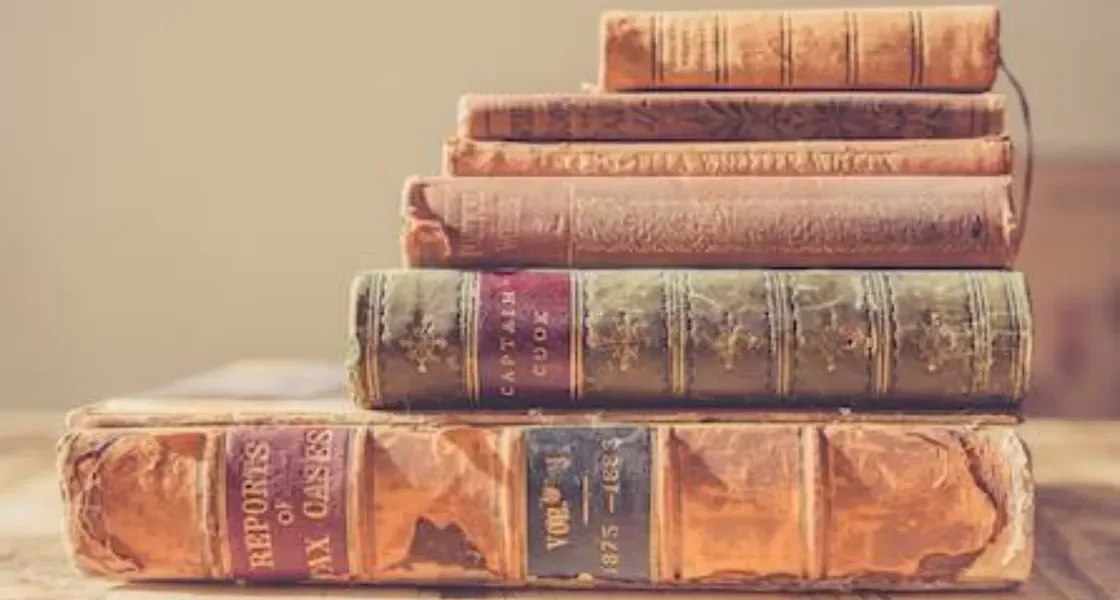
1 Epic:
Epics are monumental narratives that tackle grand themes and heroic journeys, often set in ancient or fantastical worlds. They follow legendary characters through extraordinary adventures, like Homer’s “The Iliad” and “The Odyssey,” which chronicle the Trojan War and the Odyssey of Odysseus, respectively, offering timeless tales of heroism and myth.
2 Satire:
Satire is a genre that employs humor and irony to critique human folly, societal issues, and political absurdities. A classic example is “Animal Farm” by George Orwell, which uses a group of farm animals to satirize the Russian Revolution and the subsequent totalitarianism under Stalin, revealing the darker aspects of power and governance through clever allegory.
3 Fable:
Fables are short, allegorical tales that convey moral lessons, often featuring talking animals or mythical creatures. A famous example is Aesop’s “The Tortoise and the Hare,” which teaches the timeless lesson of “slow and steady wins the race” through a story about a tortoise challenging the speedy hare.
4 Mythology:
Drawing from ancient myths and legends, mythology books explore the stories of gods, heroes, and the creation of the world. “Bulfinch’s Mythology” by Thomas Bulfinch is a comprehensive collection of myths from Greek, Roman, and Norse traditions, offering readers a fascinating journey through the tales that have shaped cultures and beliefs.
5 Poetry:
Poetry is a rich and emotive medium of artistic expression, celebrating the beauty of language and the depths of human emotions. Emily Dickinson’s collection “The Complete Poems of Emily Dickinson” showcases her mastery of poetry, using concise and evocative language to explore themes of love, nature, and the human experience.
Romance Subgenres
1 Contemporary Romance:
Contemporary romance is a genre set in modern times, focusing on love stories of the present. These novels explore the complexities of relationships, often involving relatable characters in familiar settings. A noteworthy example is “The Notebook” by Nicholas Sparks, which tells a contemporary love story that has touched the hearts of many readers with its portrayal of enduring love in a contemporary world.
2 Historical Regency Romance:
Positioned in the Regency era of the early 19th century, this subgenre explores societal norms and romance of the time. Jane Austen’s classic “Pride and Prejudice” is a prime illustration, transporting readers to a Regency world filled with manners, courtship, and the complexities of love, offering a glimpse into the social dynamics of the era.
3 Erotic Romance:
Erotic romance explores explicit sexual relationships, delving into the intricacies of passion and desire within the context of a love story. The “Fifty Shades of Grey” series by E.L. James is a well-known example, pushing the boundaries of the genre and sparking discussions about the exploration of sensuality and the dynamics of power and desire in romantic relationships.
4 Romantic Suspense:
Combining romance with elements of mystery or suspense, this subgenre creates a gripping blend that keeps readers on edge. A prime example is “The Witness” by Nora Roberts, where romance unfolds against a backdrop of danger and intrigue, adding an extra layer of excitement and anticipation to the love story.
5 Christian Romance:
Christian romance places a strong emphasis on faith and values in its portrayal of love stories. These novels often involve characters who seek or rediscover their faith as they navigate the path of love. “Redeeming Love” by Francine Rivers is a notable example, weaving a tale of love, redemption, and faith in a historical setting.
Science Fiction Subgenres
1 Cyberpunk:
Cyberpunk is a genre that delves into futuristic computer technology and cybernetics, often exploring the darker side of technology and its impact on society. William Gibson’s “Neuromancer” exemplifies this genre, where hacking, artificial intelligence, and a dystopian future take center stage, offering readers a glimpse into a world where technology and humanity are entangled in complex ways.
2 Space Opera:
Space opera is known for its epic space adventures, emphasizing grand-scale conflicts and cosmic settings. A prominent example is “Dune” by Frank Herbert, which weaves an intricate tale of political intrigue, religion, and resource warfare on a grand interstellar stage, becoming a classic in the genre of sweeping, space-based narratives.
3 Hard Science Fiction:
Rooted in scientific accuracy, hard science fiction explores realistic scientific concepts, making it a genre that often appeals to scientifically inclined readers. Arthur C. Clarke’s “2001: A Space Odyssey” is a prime illustration, as it delves into the possibilities of space exploration and artificial intelligence, based on the author’s understanding of science and technology
4 Time Travel:
Time travel is a subgenre involving journeys through time, often presenting mind-bending temporal paradoxes. H.G. Wells’ “The Time Machine” is a classic example, where the protagonist invents a machine that allows him to travel through time, exploring the far future and the consequences of time manipulation, paving the way for countless time-travel narratives.
5 Alien Invasion:
Depicting extraterrestrial invasions, this subgenre explores humanity’s resilience in the face of otherworldly threats. H.G. Wells’ “The War of the Worlds” famously depicts an alien invasion and the ensuing chaos and survival efforts, serving as a seminal work in the genre, sparking numerous adaptations and reinterpretations of the concept of alien encounters and their implications for humanity.
Mystery/Thriller Subgenres
1 Cozy Mystery:
Set in quaint and close-knit communities, cozy mysteries feature amateur sleuths who use their wit and intuition to solve crimes that disturb the peace. Agatha Christie’s “Miss Marple” series is a classic example, where the unassuming Miss Marple, living in the tranquil village of St. Mary Mead, uncovers the truth behind various murders, showcasing the charm of the cozy mystery genre.
2 Legal Thriller:
Legal thrillers offer gripping narratives centered around legal proceedings, courtroom drama, and often, the moral dilemmas of the legal profession. A quintessential example is John Grisham’s “A Time to Kill,” which delves into the complexities of a racially charged trial, examining the intricacies of justice and morality within the legal system.
3 Psychological Thriller:
Delving into the intricacies of the human psyche, psychological thrillers create tension through mental and emotional manipulation. Gillian Flynn’s “Gone Girl” is a standout in the genre, unfolding a twisted narrative of a troubled marriage, deception, and psychological warfare that keeps readers on edge with its psychological twists and turns.
4 Espionage/Thriller:
Involving espionage, spies, and international intrigue, this subgenre is full of suspenseful twists and covert operations. John le Carré’s “Tinker, Tailor, Soldier, Spy” is a prime example, offering a labyrinthine espionage narrative in which a retired intelligence officer is tasked with uncovering a mole within the British Secret Service during the Cold War.
5 Noir:
Characterized by a dark and cynical tone, noir mysteries often feature anti-heroes and moral ambiguity. Dashiell Hammett’s “The Maltese Falcon” is a classic noir novel, showcasing the hardboiled detective Sam Spade navigating a web of crime and deceit in a shadowy, morally ambiguous world.
Fantasy Subgenres
1 Urban Fantasy:
Blending fantasy elements with urban settings, this subgenre introduces magic, mythical creatures, and otherworldly beings into modern cities. Jim Butcher’s “Dresden Files” series is a notable example, where Harry Dresden, a wizard detective, solves supernatural crimes in the bustling city of Chicago, merging the mystical with the everyday.
2 High Fantasy:
Set in immersive and intricately crafted fantasy worlds, high fantasy often involves epic battles between good and evil. J.R.R. Tolkien’s “The Lord of the Rings” trilogy is the quintessential high fantasy, transporting readers to the richly detailed realm of Middle-earth and the epic struggle against the dark lord Sauron.
3 Sword and Sorcery:
Focused on action-packed adventures with sword-wielding heroes and sorcery, sword and sorcery tales often feature quests and swashbuckling heroes. Robert E. Howard’s “Conan the Barbarian” series is a hallmark of the genre, following the exploits of the formidable and fearless warrior, Conan, as he battles supernatural foes.
4 Mythic Fantasy:
Drawing from myths and legends, mythic fantasy weaves ancient folklore into its narrative. Madeline Miller’s “Circe” is a contemporary example, reimagining the story of the mythological sorceress Circe from the perspective of a strong, complex female character, blending classical mythology with modern storytelling.
5 Dark Fantasy:
Embracing elements of horror and the macabre, dark fantasy explores the eerie and supernatural. Clive Barker’s “Books of Blood” series is a notable example, offering a collection of dark and unsettling tales that delve into the darker aspects of human nature and the supernatural, creating a blend of horror and fantasy.
Adventure Subgenres
1 Survival:
Placing characters in extreme situations, survival adventures test their resilience and ingenuity as they confront life-threatening challenges. Jon Krakauer’s “Into the Wild” exemplifies this genre, recounting the real-life journey of Christopher McCandless, who sought solitude and adventure in the Alaskan wilderness, showcasing the human will to survive in the face of nature’s harshest tests.
2 Treasure Hunt:
Involving quests for hidden riches and valuable artifacts, treasure hunt adventures are full of excitement and intrigue. H.G. Wells’ “The Island of Doctor Moreau” is a treasure hunt intertwined with mystery and adventure, where the quest for the secrets of a mad scientist’s island becomes a thrilling exploration for both the characters and the reader.
3 Pirate:
Set on the high seas, pirate adventures bring swashbuckling action and daring escapades to life. Robert Louis Stevenson’s “Treasure Island” is a classic pirate adventure, where young Jim Hawkins embarks on a quest for buried treasure while contending with cunning pirates like Long John Silver, capturing the essence of high-seas adventure and intrigue.
4 Western:
Transporting readers to the American Old West, Western adventures feature cowboys, outlaws, and the challenges of frontier life. “Lonesome Dove” by Larry McMurtry is an epic Western that takes readers on a journey with a group of former Texas Rangers as they drive cattle to Montana, capturing the rugged beauty and harsh realities of the Old West.
5 Exploration:
Journeying to uncharted territories, exploration adventures capture the thrill of discovery and the perils of the unknown. In “The Lost City of Z” by David Grann, readers accompany explorers into the Amazon rainforest as they search for a mythical city, highlighting the allure and dangers of exploration in untamed lands.
Non-Fiction Subgenres
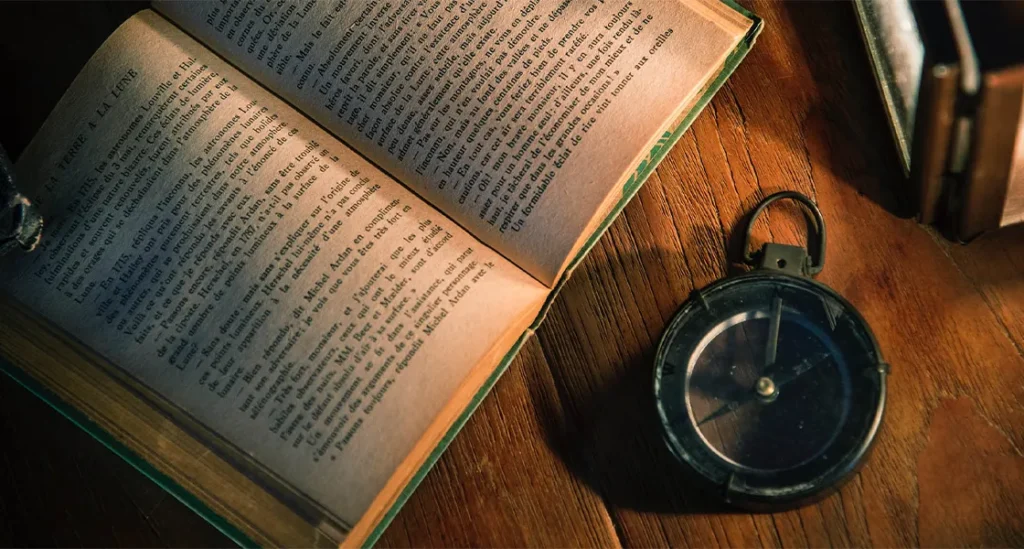
1 True Crime:
Exploring real criminal cases and investigations, true crime books offer a glimpse into the darker aspects of human behavior and the workings of the justice system. Truman Capote’s “In Cold Blood” is a landmark true crime novel that meticulously examines a brutal murder case, providing deep insights into the minds of both the perpetrators and the investigators.
2 Business:
Business books provide insights into entrepreneurship, corporate strategies, and leadership, catering to professionals and aspiring leaders. An exemplary book in this category is “Good to Great” by Jim Collins, which explores the traits that transform good companies into great ones, offering valuable lessons for business success.
3 Science Memoir:
Combining scientific knowledge with personal experiences, science memoirs offer unique perspectives on scientific discoveries. “Lab Girl” by Hope Jahren is a compelling science memoir that interweaves the author’s personal journey with her experiences as a geobiologist, providing an engaging look at the world of science and the wonders of nature.
4 Biographical Travel:
Following the journeys of travelers and explorers, biographical travel books offer firsthand accounts of global adventures. “Wild” by Cheryl Strayed is a travel memoir recounting the author’s solo hike along the Pacific Crest Trail, blending personal growth with the exploration of stunning natural landscapes.
5 Food Memoir:
Merging food appreciation with personal stories, food memoirs celebrate culinary experiences. “Julie and Julia” by Julie Powell is a delightful food memoir that recounts the author’s year-long project to cook every recipe in Julia Child’s cookbook, combining culinary escapades with personal reflection and humor.
Hybrid Genres
1 Historical Fantasy:
Blending historical events with fantastical elements, historical fantasy offers an alternate view of the past. An exceptional example is “Jonathan Strange & Mr. Norrell” by Susanna Clarke, where the Napoleonic Wars are intertwined with the revival of English magic, creating a lush and imaginative narrative that reimagines history with a touch of the mystical.
2 Romantic Comedy:
Infusing romance with humor, romantic comedies provide lighthearted entertainment. A beloved classic in this genre is “Bridget Jones’s Diary” by Helen Fielding, where the quirky Bridget navigates the ups and downs of love and life with wit and humor, delivering a delightful romantic comedy experience.
3 Science Fiction Romance:
Combining futuristic technology with romantic relationships, this subgenre blends science fiction and romance. “The Host” by Stephenie Meyer exemplifies this fusion, where a human and an alien coexist within one body, forming an unconventional and heartfelt romance against a science fiction backdrop.
4 Psychological Mystery:
Merging psychological suspense with mystery, this genre keeps readers guessing at the characters’ true motivations. “Gone Girl” by Gillian Flynn is a standout example, where a couple’s troubled marriage and mysterious disappearance lead to a gripping exploration of psychological manipulation and hidden secrets.
5 Paranormal Mystery:
Infusing mystery plots with supernatural elements, paranormal mysteries create a unique blend of suspense and the otherworldly. Charlaine Harris’s “Dead Until Dark” introduces readers to Sookie Stackhouse, a telepathic waitress embroiled in a series of supernatural mysteries that take the mystery genre into the realm of vampires and shape-shifters.
Genre Mashups
1 Time-Traveling Mystery Fantasy:
Incorporating time travel, mystery, and fantasy elements, this mashup genre offers an unparalleled reading experience. Diana Gabaldon’s “Outlander” series seamlessly combines all these elements, following Claire Randall, a nurse from 1945 who is transported to 18th-century Scotland, where she becomes entangled in a web of historical events and time-traveling mysteries.
2 Steampunk Adventure Romance:
Combining steampunk settings, action-packed adventures, and romantic entanglements, this genre appeals to a broad audience. “The Infernal Devices” series by Cassandra Clare is an excellent representation of steampunk adventure romance, where shadowhunters, clockwork creatures, and Victorian London form the backdrop for a thrilling love story.
3 Sci-Fi Dystopian Thriller:
Blending science fiction with dystopian elements and thrilling plotlines, this genre presents a thought-provoking and gripping read. Suzanne Collins’ “The Hunger Games” is an iconic example, where a dystopian society forces young participants into a deadly televised competition, offering a powerful commentary on the human condition within a dystopian setting.
4 Epic Historical Fiction:
Merging epic storytelling with historical accuracy, this genre paints vivid pictures of the past on a grand scale. Ken Follett’s “The Pillars of the Earth” is an epic historical novel set in the 12th century, featuring a rich tapestry of characters and events against the backdrop of cathedral construction.
5 Post-Apocalyptic Space Opera:
Marrying post-apocalyptic scenarios with cosmic space adventures, this mashup genre uniquely explores humanity’s survival. “The Book of the Unnamed Midwife” by Meg Elison is a post-apocalyptic space opera that follows a nurse in a world decimated by a plague, her journey for survival amidst a collapsing society, and her search for hope in the midst of chaos.
Niche and Emerging Genres

1 LitRPG:
Merging literature with role-playing games, LitRPG transports readers into virtual worlds and gaming quests where characters level up, complete quests, and face in-game challenges. “Sufficiently Advanced Magic” by Andrew Rowe is a prominent example, where the protagonist enters the Tower, a magical and treacherous place filled with puzzles and adversaries, in a story that incorporates game mechanics and progression into its narrative.
2 Isekai:
Originating from Japanese light novels, isekai features protagonists who are transported to parallel worlds with unique rules and often possess unique powers. “Re:Zero” by Tappei Nagatsuki is an isekai novel where the protagonist Subaru Natsuki is transported to another world and discovers that he has the power to return from death, making choices and consequences a central theme.
3 Climate Fiction (Cli-Fi):
Addressing climate change and environmental issues, climate fiction explores potential futures shaped by ecological challenges. “The Water Will Come” by Jeff Goodell is a non-fiction example that examines the impact of rising sea levels on coastal cities, while “The Windup Girl” by Paolo Bacigalupi is a cli-fi novel set in a future world grappling with biotechnology and environmental crises.
4 Cozy Paranormal Mystery:
Combining cozy mystery settings with supernatural elements, this subgenre offers a perfect blend of intrigue and the paranormal. Juliet Blackwell’s “Secondhand Spirits” introduces readers to a cozy mystery series featuring a witch named Lily Ivory who solves paranormal mysteries in a charming San Francisco neighborhood.
5 Solarpunk:
Solarpunk offers a refreshing take on speculative fiction by imagining optimistic futures with sustainable technology. While there isn’t a single widely recognized example, the solarpunk movement and genre explore narratives of hope, environmental sustainability, and harmonious relationships with technology, envisioning worlds where renewable energy, eco-friendly innovations, and community thrive.
Regional and Cultural Genres
1 Nordic Noir:
Hailing from Scandinavian countries, Nordic noir presents dark and atmospheric crime fiction. “The Girl with the Dragon Tattoo” by Stieg Larsson, set in Sweden, is a renowned Nordic noir novel that follows the investigation of a long-dormant mystery, combining elements of crime, family secrets, and complex characters within a chilling atmosphere.
2 Latin American Magical Realism:
Originating in Latin America, magical realism intertwines magical elements with everyday life. Gabriel García Márquez’s “One Hundred Years of Solitude” is a masterpiece of this genre, weaving a tapestry of fantastical events, such as flying carpets and levitating nuns, into the fabric of a small Colombian town’s history.
3 African-American Literature:
Centered around the experiences and voices of African-Americans, this genre highlights unique cultural perspectives and historical narratives. “Beloved” by Toni Morrison is a seminal work in African-American literature, exploring the haunting legacy of slavery and the complexities of identity, memory, and motherhood.
4 Indian Mythology Retellings:
Drawing from Indian mythology, these retellings offer fresh narratives of ancient tales. “The Palace of Illusions” by Chitra Banerjee Divakaruni reimagines the Mahabharata from the perspective of Draupadi, providing a feminist reinterpretation of a classic Indian epic.
5 Japanese Light Novels:
Popular in Japan, light novels cater to young adult readers with anime-inspired illustrations and engaging stories. “Sword Art Online” by Reki Kawahara is a well-known example, immersing readers in a virtual reality MMORPG where players must fight their way to the top, combining gaming elements with a captivating narrative.
Literary Styles and Techniques
1 Epistolary:
Told through letters, diaries, or documents, epistolary novels offer a unique narrative structure that provides readers with intimate insights into the characters’ inner worlds and experiences. “Dracula” by Bram Stoker is a classic example, weaving together various characters’ diary entries, letters, and newspaper clippings to unfold the tale of the infamous vampire, Count Dracula.
2 Stream of Consciousness:
Presenting the unfiltered flow of characters’ thoughts and emotions, the stream of consciousness style creates an intimate reading experience. James Joyce’s “Ulysses” is a renowned work that uses this technique to delve into the minds of its characters, offering a vivid and introspective journey through their thoughts, feelings, and experiences.
3 Metafiction:
Breaking the fourth wall, metafiction acknowledges its status as a work of fiction and often engages with the reader directly. “If on a winter’s night a traveler” by Italo Calvino is a metafictional masterpiece that immerses readers in a narrative about reading itself, inviting them to become part of the story and exploring the act of reading and the relationship between readers and authors.
4 Minimalist:
Emphasizing simplicity and brevity, minimalist literature conveys powerful messages with few words. “Hills Like White Elephants” by Ernest Hemingway is a minimalist short story that encapsulates a complex discussion between a couple in a few pages, showcasing how minimalist writing can evoke profound emotions and reflections.
5 Experimental:
Challenging conventional storytelling, experimental literature pushes the boundaries of narrative techniques. Mark Z. Danielewski’s “House of Leaves” is an avant-garde novel that incorporates unconventional formatting, multiple narratives, and footnotes, creating an immersive and disorienting reading experience that plays with the structure and format of the book itself.
Fictional Formats
1 Graphic Novels:
Combining art and storytelling, graphic novels present narratives in comic book form. “Maus” by Art Spiegelman is an impactful graphic novel that narrates the Holocaust through anthropomorphic characters, blending visual storytelling with a powerful and emotionally resonant narrative.
2 Verse Novels:
Conveying stories through poetic verses, verse novels create a lyrical reading experience. “The Crossover” by Kwame Alexander is a verse novel that tells the story of twin brothers who are passionate about basketball, using poetry to capture the rhythm and emotions of the sport and their lives.
3 Interactive Fiction:
Allowing readers to make choices that influence the story, interactive fiction offers multiple outcomes based on the reader’s decisions. “The Stanley Parable” by Davey Wreden is an interactive video game that explores choice and consequence within a narrative, providing players with a range of branching paths and story outcomes.
4 Short Story Collections:
Featuring a compilation of diverse short stories, collections offer a variety of themes, voices, and storytelling styles. “Interpreter of Maladies” by Jhumpa Lahiri is a collection of short stories that explore the lives of Indian immigrants and their experiences in the United States, showcasing the versatility of the short story format.
5 Episodic Series:
Unfolding stories across multiple installments, episodic series keep readers engaged over time, often in serial publications. Sir Arthur Conan Doyle’s “Sherlock Holmes” series is an episodic collection of detective stories featuring the famous detective Sherlock Holmes and his companion Dr. John Watson, with each story presenting a self-contained mystery while contributing to the larger narrative of the series.
Literary Genres from Around the World
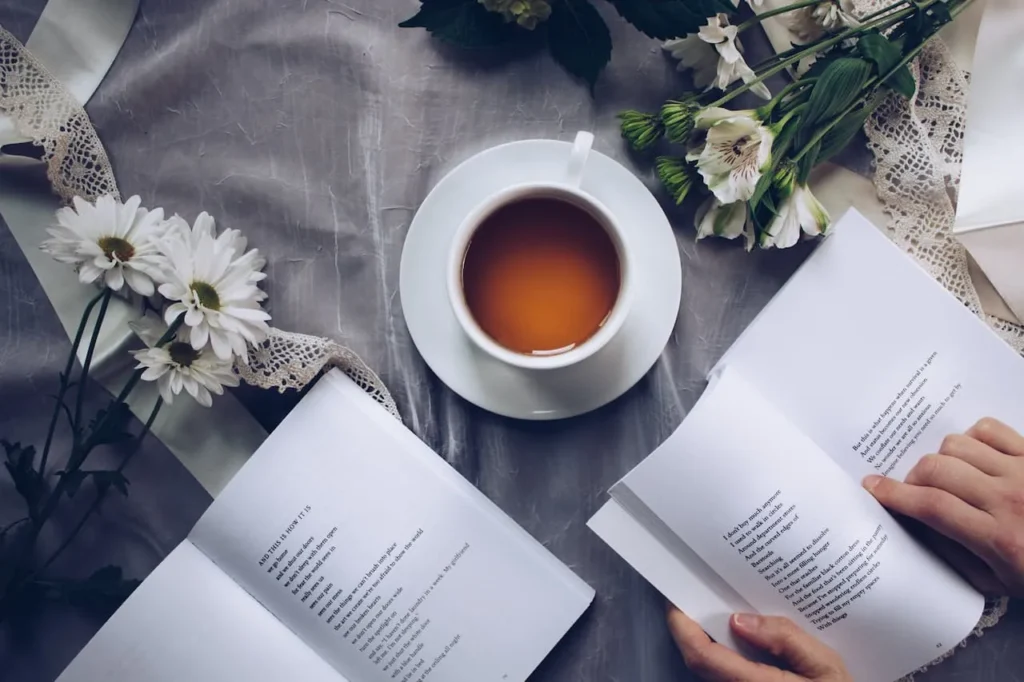
1 Russian Literature:
Known for its depth and philosophical themes, Russian literature has produced iconic works from authors like Tolstoy and Dostoevsky. Leo Tolstoy’s “War and Peace” is an exemplar, delving into the complexities of Russian society, family, and the human condition amidst the backdrop of the Napoleonic Wars, highlighting the profound storytelling and social commentary that Russian literature is renowned for.
2 Chinese Martial Arts Novels:
Exploring martial arts and chivalry, Chinese martial arts novels have a rich history in East Asian literature. “The Condor Trilogy” by Jin Yong (Louis Cha) is a celebrated example, blending martial arts prowess with historical settings, intricate characters, and ethical dilemmas, exemplifying the enduring appeal of this genre.
3 French Existentialism:
Delving into existential themes of existence, freedom, and responsibility, French existentialism has influenced literature worldwide. Jean-Paul Sartre’s “Nausea” encapsulates existentialist philosophy, following a protagonist’s existential crisis and exploration of the absurdity of human existence, illustrating the deep introspection and philosophical depth of this literary movement.
4 African Oral Tradition:
Passed down through generations, African oral tradition features rich storytelling and cultural preservation. “Sundiata: An Epic of Old Mali” is an example, an oral epic recounting the legendary life of Sundiata Keita, the founder of the Mali Empire, illustrating how African oral tradition conveys history, culture, and values through vibrant storytelling.
5 German Bildungsroman:
Focused on the protagonist’s moral and psychological growth, the Bildungsroman genre originated in Germany. Johann Wolfgang von Goethe’s “Wilhelm Meister’s Apprenticeship” is a classic Bildungsroman that follows the journey of its titular character as he navigates the complexities of society and self-discovery, exemplifying the genre’s emphasis on personal development.
Literature of Specified Times
1 World War I Literature:
Reflecting the impact of the Great War, this literature offers insights into the human condition during times of conflict. Erich Maria Remarque’s “All Quiet on the Western Front” is a powerful example, portraying the disillusionment and trauma experienced by soldiers during World War I, illustrating the profound and often somber reflections found in this genre.
2 Beat Generation Literature:
Embodying the countercultural spirit of the 1950s and ’60s, Beat literature rebelled against societal norms. Jack Kerouac’s “On the Road” is a cornerstone of Beat literature, chronicling the author’s journeys and explorations of freedom, spontaneity, and non-conformity, reflecting the rebellious and adventurous essence of the Beat Generation.
3 Roaring Twenties Literature:
Capturing the spirit of the Jazz Age, literature from the Roaring Twenties reflects the cultural shifts of the time. F. Scott Fitzgerald’s “The Great Gatsby” is an iconic representation of this era, examining wealth, extravagance, and the American Dream against the backdrop of 1920s excess, symbolizing the social and cultural dynamics of the Roaring Twenties.
4 Vietnam War Literature:
Conveying the harrowing experiences of soldiers and civilians during the Vietnam War, this literature offers poignant reflections. Tim O’Brien’s “The Things They Carried” is a powerful example, conveying the emotional and psychological burdens carried by soldiers during the war, illuminating the human stories behind the conflict’s statistics.
5 Postmodern Literature:
Characterized by self-referentiality and fragmentation, postmodern literature challenges traditional storytelling conventions. “Slaughterhouse-Five” by Kurt Vonnegut is an influential work that employs non-linear narratives and metafictional elements, addressing the absurdity of war and human nature, exemplifying the avant-garde storytelling found in postmodern literature.
Each genre caters to distinct tastes, drawing readers with unique storytelling techniques and themes. Understanding these popular book genres enables readers to embark on tailored literary adventures, exploring literature’s vast and captivating world.
Conclusion
Discover the boundless universe of literature through diverse genres that ignite your interests and passions. Beyond the 101 genres, countless subgenres, mashups, and regional gems await exploration. Grab a book, open its pages, and let your imagination journey to enchanting worlds and uncharted territories. Embrace the adventure that literature offers—endless wonders are waiting for you to explore. Start your literary voyage today.
FAQs
The genre of a book refers to its categorization based on thematic content, style, and intended audience, allowing readers to identify and choose books that align with their preferences and interests.
Genres help readers discover books that align with their tastes, ensuring a more satisfying reading experience. They act as signposts, guiding readers toward the type of content they seek.
Genres enable authors to identify their target audience, understand reader expectations, and adhere to genre-specific conventions while maintaining their unique voice.
Yes, some books may defy traditional genre categorization, falling into the category of “literary fiction” or “genre-bending” works that blend multiple genres.
Eclectic readers often enjoy exploring various genres, and that’s perfectly fine! Many books feature elements of multiple genres, offering a delightful fusion of storytelling styles.
Genres evolve alongside societal changes, technological advancements, and reader preferences shifts. New genres emerge, and existing ones may undergo transformations or even merge.
In the captivating universe of book genres, the possibilities are endless. Whether you seek thrilling mysteries, enchanting fantasies, or enlightening non-fiction, each genre promises an unforgettable journey into the world of literature.